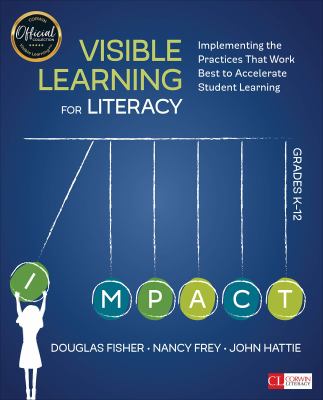
print
|
Visible learning for literacy, grades K-12 : implementing the practices that work best to accelerate student learning
Copies
3 Total copies, 3 Copies are in,
0 Copies are out.
Language
English
Dimensions
23 cm.







